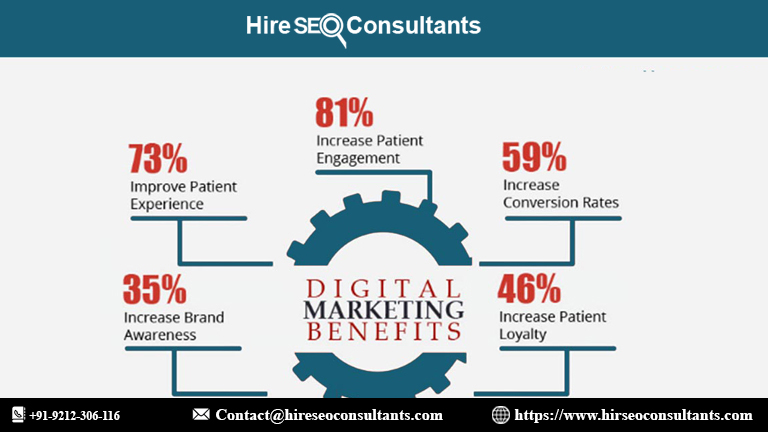In today’s competitive digital landscape, achieving the right balance between personalization and effective targeting can significantly impact the success of your email marketing campaigns. Customer profiling, a technique that involves analyzing and segmenting your audience based on various attributes, plays a crucial role in this process. By leveraging customer profiling, you can fine-tune your email marketing strategy to deliver highly relevant content to your subscribers, ultimately driving engagement and conversions.
Understanding Customer Profiling
Customer profiling involves creating detailed profiles of your target audience based on their behavior, preferences, demographics, and interactions with your brand. This process helps you gain insights into who your customers are, what they want, and how they engage with your business. By understanding these aspects, you can craft more personalized and targeted email campaigns that resonate with your audience.
Collecting Data for Effective Customer Profiling
The first step in customer profiling is gathering data. This data can come from various sources, including customer surveys, purchase history, website interactions, and social media activity. Key data points to consider include:
Demographics: Age, gender, location, and occupation.
Behavioral Data: Browsing history, purchase frequency, and email interaction rates.
Psychographics: Interests, values, and lifestyle preferences.
By compiling this data, you create a comprehensive view of your customers that allows for more effective segmentation.
Segmenting Your Audience
Once you have collected sufficient data, the next step is to segment your audience. Segmentation involves dividing your customer base into distinct groups based on shared characteristics. This approach ensures that your email campaigns are relevant to each segment, increasing the likelihood of engagement.
For example, you might create segments based on:
Purchase History: High-value customers, frequent buyers, and first-time buyers.
Engagement Levels: Active subscribers, occasional readers, and inactive users.
Demographic Information: Age groups, geographic regions, and job titles.
Effective segmentation allows you to tailor your messaging to address the specific needs and interests of each group.
Crafting Personalized Email Content
Personalization is a key factor in successful email marketing. Once you have segmented your audience, you can use the insights gained from customer profiling to create highly relevant and personalized email content. Personalization goes beyond just addressing the recipient by name; it involves tailoring the content based on their preferences and behavior.
Consider the following strategies for personalizing your emails:
Dynamic Content: Use dynamic content blocks to display different content to different segments. For instance, you can show product recommendations based on previous purchases or display location-specific offers.
Behavioral Triggers: Set up automated email campaigns that trigger based on specific actions, such as abandoned cart reminders or post-purchase follow-ups.
Personalized Subject Lines: Craft subject lines that reflect the recipient’s interests or previous interactions. This can significantly increase open rates and engagement.
Leveraging Behavioral Data
Behavioral data is invaluable for optimizing email targeting and personalization. By analyzing how customers interact with your emails and website, you can gain insights into their preferences and behaviors.
For example, tracking click-through rates, time spent on specific pages, and product views can help you understand what content resonates with your audience. Use this information to refine your email campaigns and provide more targeted content.
A/B Testing for Optimization
A/B testing, also known as split testing, involves comparing two versions of an email to determine which one performs better. This method allows you to test different elements of your emails, such as subject lines, content, and call-to-action buttons.
By conducting A/B tests, you can identify which variations lead to higher engagement and conversions. Use these insights to continuously optimize your email campaigns and improve overall performance.
Integrating Email Marketing with Other Channels
To enhance the effectiveness of your email marketing efforts, consider integrating your email campaigns with other marketing channels. For instance, align your email content with your social media campaigns, website content, and online ads. Consistent messaging across channels reinforces your brand’s message and increases the likelihood of engagement.
Additionally, use cross-channel data to further refine your customer profiles. For example, if a customer interacts with your brand on social media, incorporate this information into their email profile to provide a more cohesive and personalized experience.
Monitoring and Analyzing Campaign Performance
Regularly monitoring and analyzing the performance of your email campaigns is essential for optimizing your strategy. Key metrics to track include:
Open Rates: The percentage of recipients who open your emails.
Click-Through Rates: The percentage of recipients who click on links within your emails.
Conversion Rates: The percentage of recipients who complete a desired action, such as making a purchase.
By analyzing these metrics, you can identify trends, evaluate the effectiveness of your targeting and personalization efforts, and make data-driven decisions to improve future campaigns.
Adapting to Changing Customer Preferences
Customer preferences and behaviors are constantly evolving. To maintain the effectiveness of your email marketing strategy, it’s important to stay updated on these changes and adapt your approach accordingly. Regularly review your customer profiles and update them based on new data and insights.
For instance, if you notice a shift in customer interests or an increase in engagement with certain types of content, adjust your email campaigns to reflect these changes. Staying agile and responsive to your audience’s preferences ensures that your emails remain relevant and impactful.
FAQ
What is customer profiling in email marketing?
Customer profiling in email marketing involves creating detailed profiles of your audience based on their demographics, behaviors, and preferences. This process helps in segmenting your audience and personalizing email content to better meet their needs.
How can I collect data for customer profiling?
You can collect data for customer profiling through various methods, including customer surveys, purchase history, website interactions, and social media activity. Analyzing this data provides insights into your audience’s characteristics and behaviors.
What is segmentation in email marketing?
Segmentation is the process of dividing your customer base into distinct groups based on shared characteristics, such as demographics, purchase history, or engagement levels. This allows you to target each group with more relevant and personalized email content.
How can I personalize my email content?
You can personalize your email content by using dynamic content blocks, setting up behavioral triggers, and crafting subject lines that reflect the recipient’s interests or previous interactions. Personalization enhances the relevance of your emails and improves engagement.
What role does A/B testing play in email marketing?
A/B testing involves comparing two versions of an email to determine which performs better. It helps you identify the most effective elements of your emails, such as subject lines and content, allowing you to optimize your campaigns for better results.
How can I integrate email marketing with other channels?
Integrate your email marketing with other channels by aligning your email content with social media campaigns, website content, and online ads. Consistent messaging across channels reinforces your brand’s message and enhances overall effectiveness.
Why is monitoring email campaign performance important?
Monitoring email campaign performance is crucial for understanding how your emails are performing and identifying areas for improvement. Key metrics to track include open rates, click-through rates, and conversion rates, which provide insights into the effectiveness of your campaigns.
How should I adapt my email marketing strategy to changing customer preferences?
To adapt to changing customer preferences, regularly review and update your customer profiles based on new data and insights. Adjust your email campaigns to reflect shifts in interests and behaviors to ensure continued relevance and engagement.















